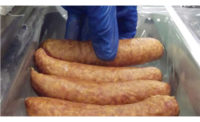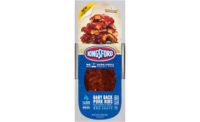Sell by. Use by. Best by. No matter how it’s defined, shelf life is a key value driver for highly perishable meat and poultry products.
Longer shelf life not only keeps shoppers happy, but it also pays dividends for processors and retailers. Product expirations cause significant shrink at the retail level, representing lost sales potential. Extending shelf life of fresh meat and poultry by just one to two days can significantly reduce product waste and improve revenue throughout the supply chain.
Shelf life also influences market opportunity. Through fall 2020, U.S. pork exports maintained a record pace. Broiler exports remained strong as well. These expanding global markets put even greater pressure on shelf life. Meat and poultry processors looking to take advantage of export opportunities – or even to expand across state lines – must establish procedures to maintain product freshness during long-distance shipping.
Both microbiological and sensory factors influence shelf life. Spoilage microorganisms affect how the final consumer sees, smells and tastes the product. For example, several species of bacteria produce gases that create a bloated or puffy-looking package. Lactic acid-producing bacteria can cause the purge in meat packages to look milky. And Pseudomonas bacteria are known to produce a grape-like smell or a green pigment on the surface of meat. These and other sensory indicators provide clues that bacteria may be compromising product shelf life.
That’s why it’s important to control all species of bacteria at every phase of processing. A multi-hurdle, multi-technology approach is the best way to prevent bacterial contamination and growth that impact shelf life.
Meeting extended shelf life goals starts with assessing your operation to determine areas of improvement. In-house research can help you identify conditions that may contribute to spoilage and develop strategies to mitigate them. Consider these four checkpoints as you evaluate ways to improve shelf life:
Sanitation process controls. Consistency is key in plant sanitation. Establish, document and validate the steps needed to ensure proper equipment and environmental sanitation. Clean belts regularly and pay attention to drains, corners and other hidden areas that may be overlooked in the sanitation process. Frequent plate counts can help you identify and address sanitation stumbling blocks that could stand in the way of longer shelf life.
Carcass cleanliness. Starting with a clean carcass helps minimize bacteria counts throughout processing. Broad spectrum antimicrobials applied during carcass wash or spray chill can reduce bacteria load without affecting meat quality or appearance.
Quality packaging. Packaging practices and materials impact meat and poultry shelf life. Strive to package products as quickly as possible to protect them from bacterial contamination. Packaging technology choices continue to evolve, so it’s important to keep abreast of new developments. Determine the best type of film, thickness and level of oxygen permeability to meet your shelf life goals. Adding vacuum packaging, gas flush or overwraps can provide even greater protection against post-packaging bacterial contamination. Often a combination of technologies produces the best results.
Cold chain management. Bacteria growth and spoilage occur faster in warmer temperatures. It’s essential to keep products clean and cold during processing and through shipping. Ensure that trucks carrying your products have proper refrigeration to maintain the cold temperatures needed to prevent spoilage.
Maintaining best practices through the entire manufacturing process is essential to preserve product freshness. Extending shelf life is well worth the added effort – delivering higher quality meat and poultry products for customers and greater returns for processors and retailers. NP




Report Abusive Comment